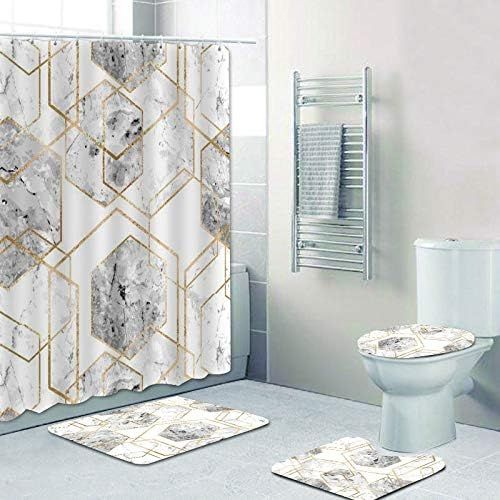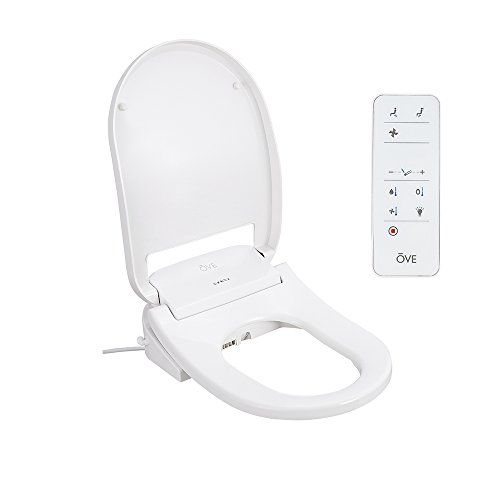How To Fix Soft Spot In Bathroom Floor
Are you tired of that annoying soft spot in your bathroom floor? Well, fear not, because in this article, we’re going to show you exactly how to fix it.
Whether it’s caused by water damage or structural issues, we’ve got you covered. First things first, you’ll need to identify the cause of the soft spot. Once you’ve done that, gather all the necessary tools and materials to get the job done.
Then, it’s time to roll up your sleeves and remove the damaged flooring. After that, it’s all about repairing or replacing the subfloor and reinforcing it to ensure a long-lasting fix.
Once the subfloor is taken care of, you can install new flooring and seal it for a finished look. Finally, don’t forget to test the repaired area and learn some tips on how to maintain your floor to prevent future soft spots.
So, let’s dive in and get that bathroom floor back in shape!
Key Takeaways
- Soft spots in bathroom floors are often caused by water damage, which compromises the structural integrity of the floor and poses a safety hazard.
- It is important to regularly inspect for water damage in order to catch it early and prevent significant damage and costly repairs.
- Hiring a professional plumber to fix plumbing issues promptly is crucial, as they have the knowledge, experience, and access to specialized tools and equipment to effectively address the root cause and prevent reoccurrence.
- Investing in professional plumbing services can protect the structural integrity of the bathroom floor and prevent the development of soft spots.
Identify the Cause of the Soft Spot
Now you need to figure out what’s causing that soft spot in your bathroom floor so you can finally put an end to the frustration and worry it’s been causing you.
The first step is to identify the cause of the soft spot. Start by assessing the damage. Is the soft spot localized or spread out? Is it near any plumbing fixtures or water sources? Look for signs of water damage, such as discoloration, mold, or mildew. It’s possible that a leaky pipe or a plumbing issue is causing the soft spot.
Another potential cause could be a damaged or deteriorating subfloor. Inspect the area carefully to determine if there are any visible signs of rot or decay.
By identifying the cause of the soft spot, you’ll be one step closer to fixing it and ensuring a sturdy bathroom floor.
Gather the Necessary Tools and Materials
First, you’ll need to gather all the tools and materials required for this project. To fix a soft spot in your bathroom floor, you’ll need the following tools: a circular saw, a pry bar, a hammer, a drill, a utility knife, a tape measure, and safety goggles. Additionally, you’ll need the following materials: a replacement subfloor, plywood, nails, construction adhesive, and a waterproofing membrane.
To give you a clear picture, here is a table detailing the tools and materials needed:
| Tools Needed | Materials Required |
|---|---|
| Circular Saw | Replacement Subfloor |
| Pry Bar | Plywood |
| Hammer | Nails |
| Drill | Construction Adhesive |
| Utility Knife | Waterproofing Membrane |
| Tape Measure | |
| Safety Goggles |
By gathering all the necessary tools and materials, you’ll be well-prepared to tackle the task of fixing the soft spot in your bathroom floor.
Remove the Damaged Flooring
To successfully address the issue at hand, the initial step is to remove the flooring that’s been compromised. Start by removing any damaged tiles or linoleum from the affected area. Use a pry bar or putty knife to gently lift the tiles, being careful not to damage the surrounding flooring.
If you encounter any resistance, use a heat gun or hairdryer to soften any adhesive or glue. Once the damaged tiles are removed, inspect the subfloor for signs of water damage. If you notice any soft spots or rot, it’s important to repair them before proceeding.
Cut out any damaged sections of the subfloor and replace them with new plywood or OSB. Secure the new subfloor in place using screws, ensuring a solid and stable foundation for your new flooring.
Repair or Replace the Subfloor
Once you’ve removed the damaged flooring, it’s time to decide whether to repair or replace the subfloor. This decision depends on various factors, including the extent of the damage and your budget.
If the soft spot is small and localized, you may be able to repair it by reinforcing the existing subfloor. This involves adding additional support beams or plywood patches to strengthen the weakened area.
However, if the damage is extensive or if there are multiple soft spots in the bathroom floor, it’s usually more cost-effective to replace the entire subfloor. This ensures a solid foundation for the new flooring and helps prevent future soft spots from occurring.
Keep in mind that replacing the subfloor can be a labor-intensive and time-consuming process, so it’s important to weigh the cost considerations before making a final decision.
Reinforce the Subfloor
If you’re looking to ensure a sturdy foundation for your new flooring and prevent future issues, reinforcing your subfloor is a crucial step in the renovation process. A weak subfloor can lead to sagging floors, which can cause a variety of problems down the line. By reinforcing the subfloor, you can prevent these issues and provide a solid base for your new flooring.
One way to reinforce the subfloor is by adding additional support beams or joists. These can be installed parallel to the existing joists to provide extra strength and prevent any further sagging. Another option is to use plywood or OSB (oriented strand board) to strengthen the subfloor. These materials can be attached to the existing subfloor using screws or nails, creating a more stable and rigid surface.
To give you a better idea of how reinforcing the subfloor can prevent sagging, here’s a table that highlights the benefits:
| Reinforcing Subfloor | Preventing Sagging |
|---|---|
| Adds extra support | Maintains floor level |
| Increases stability | Prevents damage to new flooring |
| Reduces risk of future issues | Provides a solid base for future renovations |
By reinforcing your subfloor, you can ensure a long-lasting and durable foundation for your new bathroom floor.
Install New Flooring
Now it’s time to give your bathroom a stunning makeover by installing brand new flooring that will transform the look and feel of the space.
Installing tile is a popular choice for bathroom floors due to its durability and water-resistant properties. Before you begin, it’s important to choose the right flooring material that suits your style and budget.
Ceramic or porcelain tiles are common options as they’re easy to clean and come in a wide range of colors and patterns. Another option is vinyl flooring, which is affordable, low-maintenance, and available in various designs.
Whatever material you choose, make sure it’s suitable for wet areas and can withstand the moisture and humidity of a bathroom. By carefully selecting the right flooring material and installing it properly, you can create a beautiful and functional bathroom floor that’ll stand the test of time.
Seal and Finish the Floor
To seal and finish the floor, you’ll first want to apply a sealant or waterproofing product to protect the surface from moisture and potential damage. This will help to extend the lifespan of your new flooring.
Once the sealant has dried, you can then proceed to finish the floor with a coat of paint or stain, giving it a polished and attractive appearance. Make sure to choose a finish that complements the overall aesthetic of your bathroom and follow the manufacturer’s instructions for application to achieve the best results.
Apply Sealant or Waterproofing
First, tackle the soft spot in your bathroom floor by applying a strong sealant or waterproofing solution. This step is crucial in preventing further damage and ensuring the longevity of your floor.
Here are five key benefits of using sealant or waterproofing techniques:
-
Provides a protective barrier: Sealant or waterproofing solutions create a barrier that prevents moisture from seeping into the floor, thus reducing the risk of soft spots.
-
Increases durability: By sealing the floor, you enhance its resistance to wear and tear, making it more durable and long-lasting.
-
Prevents mold and mildew: Properly sealing your bathroom floor inhibits the growth of mold and mildew, which can lead to health issues and further damage.
-
Easy to apply: Most sealants come in user-friendly formats and can be easily applied with a brush or roller.
-
Cost-effective solution: By addressing soft spots early on and applying sealant, you can avoid costly repairs in the future.
Applying a high-quality sealant or waterproofing solution is an effective way to fix soft spots in your bathroom floor and maintain its integrity for years to come.
Finish the Floor with Paint or Stain
Additionally, adding a coat of paint or stain to the floor not only enhances its aesthetic appeal but also provides an extra layer of protection against daily wear and tear. When it comes to choosing the right finish for your bathroom floor, you have two main options: wood or tile flooring. Both have their own pros and cons. Wood flooring offers a warm and natural look, but it may not be the best choice for bathrooms due to its susceptibility to water damage. On the other hand, tile flooring is durable and waterproof, making it a practical choice for bathrooms. However, it can be cold and uncomfortable to stand on for long periods.
To help you make an informed decision, here is a table comparing the two options:
| Wood Flooring | Tile Flooring | |
|---|---|---|
| Pros | – Warm and natural look – Can be refinished – Softer underfoot |
– Durable and waterproof – Easy to clean – Wide variety of styles |
| Cons | – Susceptible to water damage – Requires regular maintenance – Not ideal for wet areas |
– Cold and uncomfortable – Difficult to install – Limited design options |
While you may be tempted to tackle the floor installation yourself, hiring a professional has its benefits. They have the expertise and tools to ensure a precise and long-lasting installation. DIY installations can be time-consuming and may result in costly mistakes. So, consider the advantages of professional installation before making your final decision.
Test the Repaired Area
Now, it’s time to check if the repaired area in the bathroom floor is solid. To ensure that your fix will last, it’s important to test the durability of the repaired spot.
Here are some testing methods you can use:
-
Visual Inspection: Carefully examine the repaired area for any signs of cracks, sagging, or sinking. Look for any changes in the floor’s appearance that might indicate weakness.
-
Pressure Test: Apply pressure to the repaired spot by standing on it or placing heavy objects. If the area feels sturdy and doesn’t give in or make any unusual noises, it’s a good sign that the repair is holding up.
-
Moisture Test: Check for any signs of moisture or leaks in the repaired area. Use a moisture meter or simply look for water stains or discoloration on the floor.
-
Longevity Test: Give the repaired area some time to settle and observe its performance over a period of several weeks or months. If it remains solid and doesn’t show any signs of deterioration, then you can be confident in the repair.
By following these testing methods and evaluating the durability of the repaired spot, you can ensure that your bathroom floor is solid and secure.
Maintain and Prevent Future Soft Spots
To maintain your bathroom floor and prevent future soft spots, it’s crucial to regularly inspect for water damage. Take the time to check for any signs of leaks or moisture accumulation around fixtures, such as toilets and sinks.
Additionally, it’s essential to address any plumbing issues promptly to avoid further damage and potential soft spots.
By staying vigilant and taking immediate action, you can ensure the longevity and durability of your bathroom floor.
Regularly Inspect for Water Damage
Make sure to regularly check for any signs of water damage in your bathroom floor to prevent any soft spots from becoming a bigger problem. Here are four important signs of water damage to look for:
-
Discoloration: Keep an eye out for any dark or discolored spots on your bathroom floor. These can indicate that water’s seeped into the flooring and caused damage.
-
Warping or Buckling: If you notice any areas of your bathroom floor that’re warped or buckled, it could be a sign of water damage. Moisture can cause the floorboards to swell and distort their shape.
-
Softness: Gently press down on different areas of your bathroom floor. If you notice any areas that feel soft or spongy, it’s a clear sign that there’s water damage.
-
Mold or Mildew: Look for any signs of mold or mildew on or around your bathroom floor. These can thrive in damp environments and’re a strong indication of water damage.
By regularly inspecting your bathroom floor for these signs, you can catch water damage early and prevent soft spots from developing.
Address any Plumbing Issues Promptly
If you want to prevent further damage and costly repairs, it’s important to promptly address any plumbing issues you discover in your bathroom. Water damage can lead to a soft spot in your bathroom floor, compromising its structural integrity and posing a safety hazard.
To prevent water damage, it’s crucial to fix any leaky faucets, toilets, or pipes as soon as possible. These issues may seem minor at first, but if left unattended, they can cause significant damage over time.
Professional plumbing services are essential in addressing plumbing issues effectively. A qualified plumber has the knowledge and experience to identify and fix the root cause of the problem, ensuring that it doesn’t reoccur. They also have access to specialized tools and equipment that can help detect hidden leaks or damage.
By investing in professional plumbing services, you can protect your bathroom floor and prevent any further soft spots from developing.
Frequently Asked Questions
How long does it take to identify the cause of a soft spot in the bathroom floor?
To identify the cause of a soft spot in your bathroom floor, you need to inspect the area thoroughly. Look for signs of water damage, rot, or structural issues. Once you’ve identified the cause, you can then proceed to repair the soft spot.
Can I use regular household tools to remove the damaged flooring?
Yes, you can use regular household tools to remove the damaged flooring. Start by cutting the flooring into smaller pieces with a utility knife or reciprocating saw. Then, pry up the pieces using a pry bar or crowbar.
What are the common signs of a damaged subfloor that needs repairing or replacing?
Common signs of a damaged subfloor include sagging or uneven floors, creaking or squeaking sounds, and visible water damage or mold. To prevent future damage, ensure proper ventilation, fix any plumbing leaks promptly, and avoid excessive moisture in the bathroom.
Is it necessary to reinforce the entire subfloor or just the area with the soft spot?
To fix a soft spot in your bathroom floor, it is not always necessary to reinforce the entire subfloor. You can focus on reinforcing just the area with the soft spot to provide added support and stability.
How long does it typically take for the new flooring to fully dry and be ready for use after installation?
Typically, the new flooring takes about 24-48 hours to fully dry and be ready for use after the installation process. It’s important to allow enough time for proper drying to ensure a long-lasting and durable result.
Conclusion
Congratulations! You’ve successfully fixed the soft spot in your bathroom floor. By identifying the cause, gathering the necessary tools and materials, removing the damaged flooring, repairing or replacing the subfloor, reinforcing it, installing new flooring, sealing and finishing the floor, and finally testing the repaired area, you’ve taken all the necessary steps to ensure a sturdy and durable bathroom floor.
Remember to maintain and prevent future soft spots by addressing any potential issues promptly. Well done!










.jpg)








